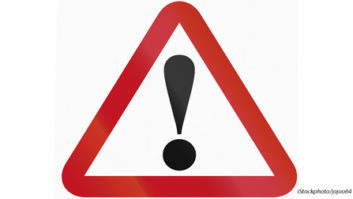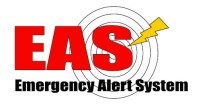
Gary Timm is the Broadcast Chair of the Wisconsin State Emergency Communications Committee and served on CSRIC V, Working Group 3, as the chair of the EAS Operating Handbook Update Project Team. He spoke with Radio World about project team’s report on updating the EAS Operating Handbook.
Radio World: As a review for our readers, what is the purpose of the EAS Operating Handbook?
Gary Timm: The EAS Operating Handbook is required to be posted at all broadcast station normal duty positions as a reference in handling the president’s EAS message, tests, and state and local EAS alerts.
RW:Can you tell us about the CSRIC group that authored the report?
Timm: CSRIC is the Communications Security, Reliability and Interoperability Council, a federal advisory committee composed of volunteers who advise the FCC on various issues. Working Group 3 was assigned EAS issues, one of which was to update the EAS Operating Handbook, the task handled by the project team that I chaired. We conducted conference calls on a weekly basis for six months and had over 20 members on our team including from broadcast radio and TV, cable TV, satellite radio and TV, IPTV, EAS equipment manufacturers, EAS SECC members, along with federal partners FEMA and NWS.
RW: What was the FCC-assigned task for this project team?
Timm: The current EAS Operating Handbooks were last updated in 2007. We were to update them to reflect current EAS procedures. Thus the new handbook recommendation does not contain any new operational procedures, it merely seeks to document how alerts are currently issued.
RW: Were you able to accomplish any additional improvements to the handbook?
Timm: One of our secondary achievements was condensing the current five handbooks (one for each EAS Participant type) down to just one version for use by all EAS participants. We accomplished that goal through the use of checkboxes and fill-in-the-blank operational steps, allowing each EAS Participant to customize the handbook to reflect their implementation of EAS. This allows options to account for variations such as attended vs. unattended operation, and automatic vs. manual alerting mode. As an aid to completing the blanks in the handbook, we created a set of page-by-page instructions.
RW: Were there other changes you recommended regarding the handbook content?
Timm: Yes, we recommended that the handbook focus solely on the information needed by the operator on duty to respond to and originate EAS messages. Any EAS background details or other information not specifically needed by the operator on duty we recommended that the FCC move to a new document we called the EAS Participant Guide.
RW: Tell us more about the EAS Participant Guide.
Timm: While the EAS Operating Handbook itself is designed for use by the operator on duty, such as in a radio studio, we felt additional EAS details could be of use in a second document designed for use by the individual responsible for EAS operations and compliance at each EAS Participant facility, such as the broadcast station designated chief operator. We called this the EAS Participant Guide, and submitted an outline in our report addressing the topics we felt appropriate for this guide. This would be a place to document details within the EAS rules, such as special rules regarding LPFM, LPTV, translator and booster stations, as well as a repository for details not found in the EAS rules, such as the CRSIC recommended EAS security best practices and EAS resource links and guidance. We recommend the FCC develop this guide.
RW: Did your project team make any additional recommendations?
Timm: A final deliverable we provided is a list of EAS rules identified as needing update. These are current EAS rules that we recommend that the FCC consider updating to remove obsolete concepts and clear up ambiguities. As the FCC addresses these updates, it is possible that there could be EAS operational changes. These might involve how LPFM, LPTV and Class D FM stations handle EAN and NPT messages, as well as if the RWT can be relayed to satisfy FCC rules or if it must be originated — two issues we’ve requested clarification on from the commission. Lastly, we’ve also recommended that the FCC encourage EAS equipment manufacturers to define how their users can implement the various choices discussed in the handbook.
RW: Is there anything else you want to add?
Timm: I just want to stress that everything in this CSRIC report is a recommendation to the FCC, and there is no presumption that they will accept or adopt it as written. So while my answers here can describe what CSRIC recommended to the commission, the final product could look quite different than what CSRIC proposed. It should be noted that an FCC Public Notice was released on June 27, 2016, requesting public comments on the CSRIC-recommended EAS Operating Handbook. Comments received from that Notice, as well as improvements made by the commission itself, will most likely result in changes. It was definitely CSRIC’s intent to more provide the content of the new EAS Operating Handbook, than the actual format, so there could be changes in its appearance as well.












